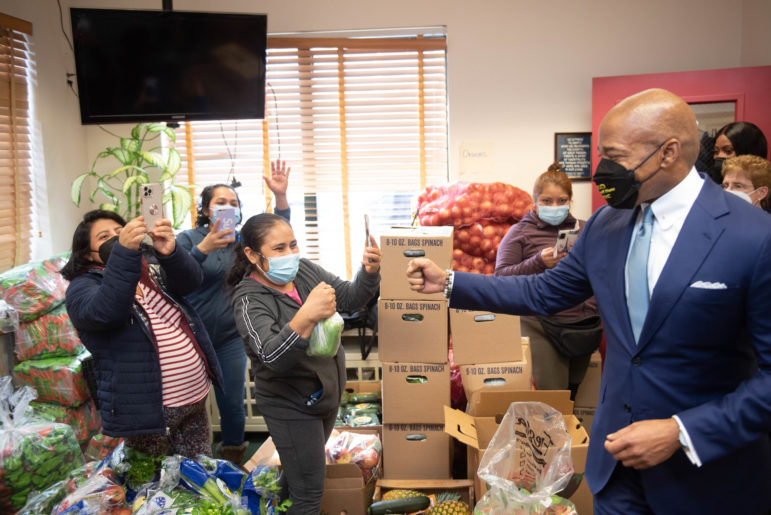‘Historically, city agencies have been too siloed and funding for programs too disparate to create meaningful improvements to people’s health. I believe Eric Adams is the mayor to change that.’

Michael Appleton/Mayoral Photography Office
Mayor Eric Adams during a nutrition-related announcement in The Bronx in February.Mayor Eric Adams recently signed executive orders requiring city agencies to improve nutrition standards at city-run facilities, introduced vegan meals at schools, and plant-based lifestyle medicine clinics at Health + Hospital-run sites. He’s been committed to a whole health approach—including diet, exercise and taking public transportation—since the days his own health problems demanded immediate action. Given the relatively poor health of residents, particularly Black and Latinx residents who suffer from disproportionally high negative health outcomes, the city should scale the mayor’s approach, involving all city agencies in improving health outcomes.
The city’s Department of Health and Mental Hygiene (DOHMH) recognizes the importance of addressing whole health by improving social determinants like housing, nutrition, education, public safety, employment and more, writing, “Many of the factors that affect health happen outside of a doctor’s office.” Social determinants are responsible for an astounding 80 percent of a person’s health status.
Historically, city agencies have been too siloed and funding for programs too disparate to create meaningful improvements to people’s health. I believe Adams is the mayor to change that.
Agencies should start their collaborative efforts by focusing on the lowest income residents, for whom these social factors come in their worst form, and who have the worst health outcomes.
 CityViews are readers’ opinions, not those of City Limits. Add your voice today!
CityViews are readers’ opinions, not those of City Limits. Add your voice today!
Take for example residents of East New York, where my organization’s Health Hub is located. According to the DOHMH, residents there are less likely to eat fruits and vegetables and much more likely to consume sugary drinks; their education lags, propelled by a 50 percent higher elementary school absenteeism rate than the city average and a lower on-time high school graduation rate; they are significantly more likely to live in a building with multiple health-threatening maintenance issues; and, the incarceration, violence, and poverty rates are all double the city average.
Given this, it’s not surprising that residents of East New York are much less healthy than residents in almost every other neighborhood. They experience a 40 percent higher obesity rate, a nearly 25 percent higher hypertension rate, double the average psychiatric hospitalization rate, and among the lowest life expectancy in the city.
READ MORE: What Drives NYC’s Health Disparities?
But it needn’t be that way.
We see the impacts of a small-scale whole health approach at our Health Hub. People come to us to help address significant psychiatric problems, but we also provide them with onsite physical health services, a food pantry stocked with produce, on-site healthy meals for food insecure patients, and case managers who help address housing problems, public benefits access, and more.
City agencies too have a track record of some collaboration to improve health. Mental health clinics at schools increased visits tenfold; the Building Healthy Communities initiative brought together the departments of health, transportation, and parks to improve physical activity and healthy eating at select NYCHA sites; and Take Care New York 2020 used a collaborative private/public model to improve maternal, child, and community health.
But this isn’t enough. We need a larger-scale whole health approach with a broad range of agencies collectively responsible for improving outcomes. There could be no more pressing time than now, coming out of a pandemic. And there could be no better opportunity than with a mayor so committed to health and well-being.
So where should we start? With the Fiscal Year 2023 budget planning cycle. Agencies should work together to develop shared health improvement goals and develop targeted cross/agency plans for achieving those goals. And they should look to trusted community partners—nonprofits with long histories and impacts in communities—to help guide their understanding of individuals’ and neighborhood challenges.
No one doctor nor one agency, no matter how well-intentioned, thoughtful, and experienced, can move the needle on a person or community’s health. For that, we need collaboration and a shared vision. We can do it. We can help New Yorkers achieve greater health. And Mayor Adams can continue to lead by example and with action.
Jody Rudin is the president and CEO of the Institute for Community Living.







